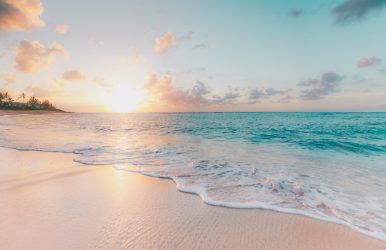From Cocktails To Kickflips: Must-Try Activities In San Diego
BY Ankita Mar 29, 2024
San Diego, often known as the Finest City in America, is a spirited coastal metropolis. It is quite popular for its year-round sunshine, stunning beaches, and diverse array of activities. From sipping cocktails with ocean views to mastering kickflips at renowned skate parks, this city offers something for everyone. This article is all about enjoying San Diego to its fullest. Whether you're a local looking to explore your backyard or a visitor seeking adventure, here are some must-try activities in this strategic destination. Beach Hopping: Beach hopping is a must-do activity in San Diego, which has more than 70 miles of pristine coastline. Each beach has its charm and activities, from the popular shoreline of La Jolla and Mission Beach to the hidden jewels of Windansea and Sunset Cliffs. There are other beaches, too, like Del Mar, Imperial Beach, and Mission Beach, which are worth visiting. Whether you're into sunbathing, surfing, or simply strolling along the shoreline, San Diego's beaches have something for everyone. Mixology Classes: For those looking to up their cocktail game, San Diego mixology classes provide an excellent opportunity to learn the skill of creating a perfect drink while socializing with other lovers. These classes allow participants to learn the art of mixology under the supervision of expert bartenders. From mastering traditional cocktails to making innovative creations, these programs offer a unique experience for cocktail enthusiasts of all skill levels. Mixology is actually a better hobby to pursue because you can learn new skills along with enjoying your trip. Farmers' Markets: Embrace San Diego's farm-to-table culture by visiting one of its many farmers' markets. From the bustling Little Italy Mercato to the laid-back Ocean Beach Farmers Market, these markets offer a feast for the senses. Sample freshly harvested fruits, artisanal cheeses, and gourmet treats while soaking in the vibrant atmosphere and supporting local farmers and producers. Farmer’s market is not too popular, but one can easily consider it a hidden gem owing to the magic it follows. Hiking Trails: Hiking paths in San Diego County provide an opportunity to explore the county's different landscapes. From the steep terrain of Torrey Pines State Natural Reserve to the panoramic panoramas of Cowles Mountain, there are routes for all skill levels. The city has uneven terrains, rusty mountains, and chipped streets- all ideal for hiking. So, don’t let your trip go to waste. Lace up your hiking boots, bring lots of water, and immerse yourself in the natural beauty that surrounds the city. Skateboarding: San Diego is considered the cradle of skateboarding culture, giving it a haven for skaters of all skill levels. Test your abilities at world-class skate parks such as Ocean Beach Skatepark and the historic Chicano Park Skatepark. Whether you're a beginner who is taking skateboarding lessons or a seasoned pro perfecting your tricks, the city's skateboarding scene offers endless opportunities for adrenaline-fueled fun. Water Sports: Take advantage of San Diego's coastal location by trying your hand at various water sports. Whether you're a beginner or an expert, there are numerous activities available, including surfing, paddleboarding, kayaking, and sailing. Rent equipment from local outfitters or sign up for lessons to improve your skills while enjoying the cool waters of the Pacific Ocean. Water sports in and around California are excellent adventures. And when it comes to an outstanding location like San Diego, there’s nothing you want to miss out on. Gastronomic Adventures: Indulge your taste buds in San Diego's thriving culinary scene, which boasts everything from gourmet dining to casual street food. Sample fresh seafood at waterfront eateries, feast on authentic Mexican cuisine in Barrio Logan, or embark on a culinary tour of the city's diverse neighborhoods. With its fusion of flavors and international influences, San Diego is a paradise for food lovers. Sunset Cruises: Finish your day on a high note by taking a sunset sail in San Diego Bay. Relax aboard a yacht or sailboat while admiring the stunning views of the city skyline, Coronado Bridge, and neighboring sites. Sip champagne, eat hors d'oeuvres, and soak up the golden hues of the setting sun for an amazing experience. Take your spouse along with you as you embark on a beautiful journey filled with romantic experiences. Live Entertainment: Immerse yourself in San Diego's vibrant nightlife by checking out its live entertainment venues. From intimate jazz clubs and indie music venues to lively dance clubs and comedy clubs, there's no shortage of options for evening entertainment. Catch a live performance by local musicians, laugh out loud at a stand-up comedy show, or dance the night away to the beats of talented DJs. Golf Course: Visiting Torrey Pines Last but not least, do not forget to visit the iconic Torrey Pines Golf Course. This championship course is extended to large areas of land. If you are a sports enthusiast, visit this diverse terrain and take your friends and travel partners along with you. Visit Museums The Museum of Contemporary Art in San Diego is something you shouldn’t miss. Lying in a flagship location, this museum building was actually designed by Irving Gill, a renowned architect. It was initially homemade for Ellen Browing Scripps, the famous philanthropist. However, it was changed into a museum as soon as 1941 kicked in. At present, MCASD consists of several art collections that must be visited when someone is in San Diego. The Bottom Line San Diego has a wide range of activities to suit everyone's interests and preferences. Whether you're looking for outdoor activities, cultural experiences, or culinary delights, this coastal paradise has something for everyone. So, grab your sunscreen, sense of adventure, and appetite for exploration, and get ready to experience everything that San Diego has to offer—from cocktails to kickflips and everything in between. With that, here’s an end to this comprehensive guide. Make San Diego your next favorite destination, and trust us, you will not regret it. Thank you for reading till the end. I hope you like it. Read Also: 10 Best Things To Do In San Diego (USA) 4 Unique Ways Of Enjoying Your Holiday In San Diego San Diego Fishing Adventure: Private Charters For Every Angler












